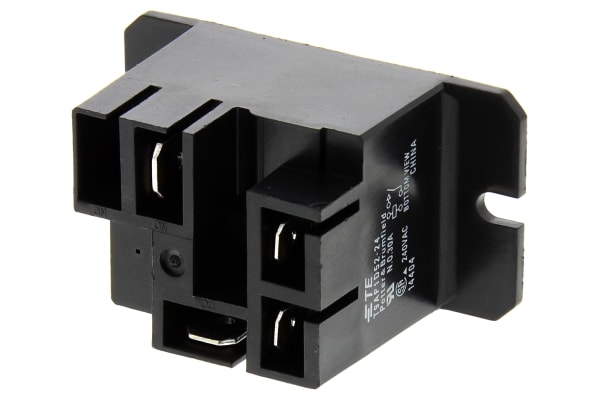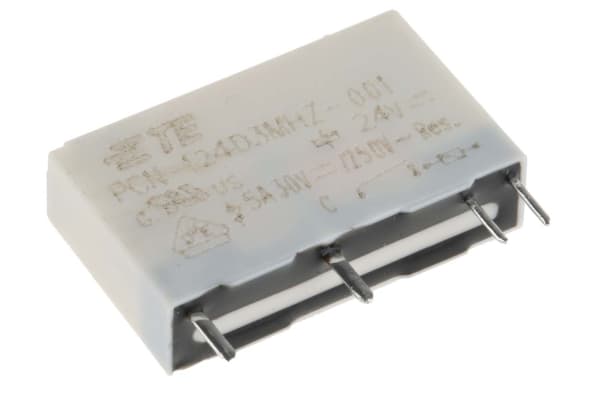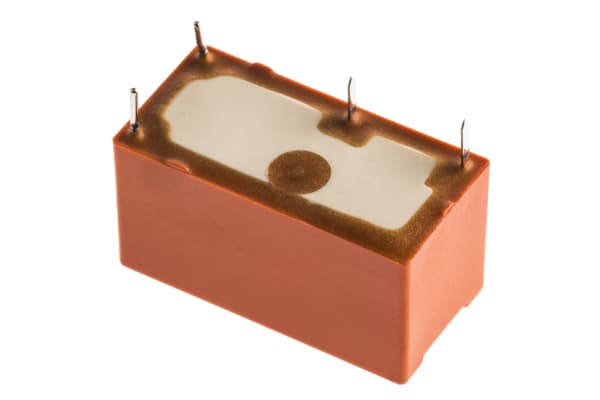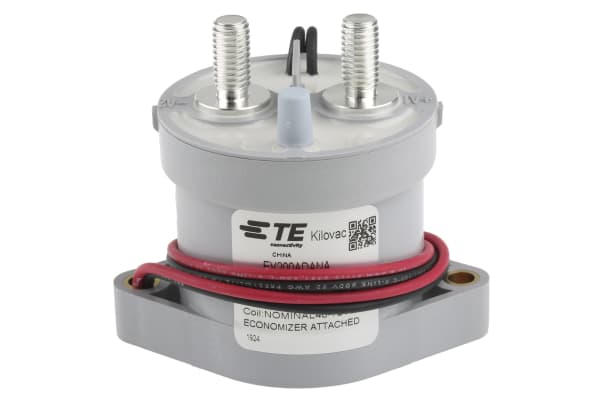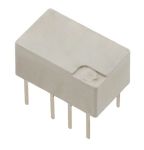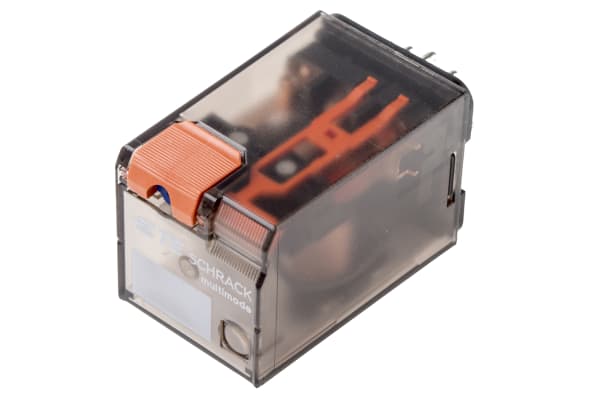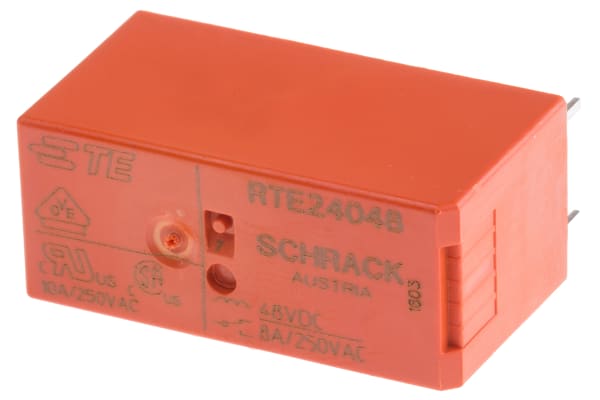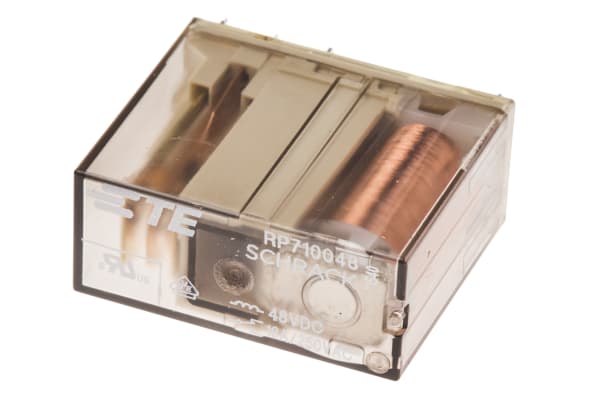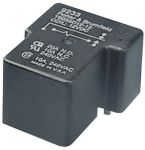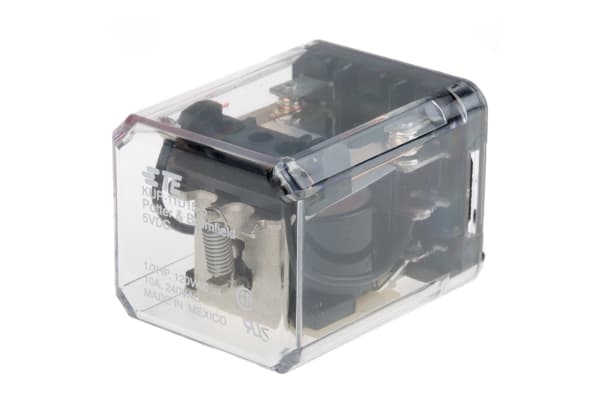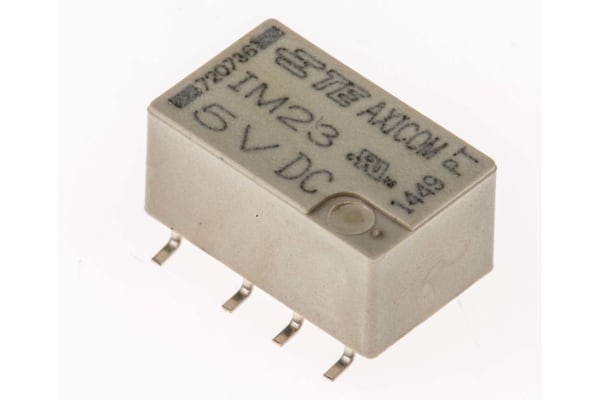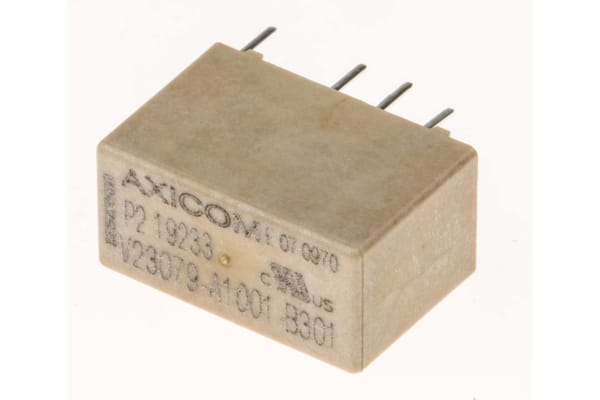Non-Latching Relays
Relays are electrical switches that are operated by electrical impulses with the primary function to open and close a circuit, they can also be referred to as industrial switches. There are 2 main types available, latching and non–latching relays.How do non-latching relays work?Non-latching relays are in a normally closed (NC) position and will stay in this state without power. When power passes through the circuit, the relay switched to a normally open (NO) position by using an internal coil to generate a magnetic force, holding this NO position. Once the current is turned off, it returns to the NC position. This makes non-latching relays well suited to push-button applications like keyboards and micro-controller input buttons.What are non-latching relays used for?Non-latching relays are highly durable and versatile components, making their performance long lasting and suitable for use in a wide range of applications, such as:Automotive enginesHousehold appliancesIndustrial machineryMedical equipmentTelecommunications equipmentWhat is the difference between latching and non-latching relays?Both types of relays in similar in design and function, however, a significant difference between them is that a latching relay will remain in the last position it when it was last powered, whereas a non-latching goes back to its normal position. This makes each more type of relay suitable for different applications. Considerations when selecting a relayWhen choosing a relay, it is important to consider a number of specifications to ensure it is fit for purpose, some factors include:Coil voltage – the required voltage to actuate the switching mechanism. If a voltage is too high this could damage the components, if it is too low then it will not actuate. Contact configuration – This is the state the contacts are in without power. For example SPST, single pole single throw.Contact material – the relay contacts are available in many materials that have certain properties. Common materials are gold, silver, tin oxide and nickel Coil power – the amount of power (watts) the coil operates at. This must match the power in the circuit for correct function. Coil resistance – the amount of resistance (ohms) in the circuit that the coil creates.
-
TE Connectivity, 24V dc Coil Non-Latching Relay SPNO, 16A Switching Current PCB Mount Single Pole, RT334024
IDR63,458.45 -
TE Connectivity, 24V dc Coil Non-Latching Relay SPNO, 16A Switching Current PCB Mount Single Pole, RTS3L024
IDR86,639.14 -
TE Connectivity, 24V dc Coil Non-Latching Relay SPNO, 30A Switching Current Flange Mount Single Pole, T9AP1D52-24
IDR104,575.33 -
TE Connectivity, 24V dc Coil Non-Latching Relay SPNO, 30A Switching Current PCB Mount Single Pole, T9AS1D12-24
IDR69,961.63 -
TE Connectivity, 24V dc Coil Non-Latching Relay SPNO, 5A Switching Current PCB Mount Single Pole, 7-1461491-6
IDR102,687.31 -
TE Connectivity, 24V dc Coil Non-Latching Relay SPNO, 6A Switching Current PCB Mount Single Pole, RE034024
IDR50,032.53 -
TE Connectivity, 24V dc Coil Non-Latching Relay SPNO, 8A Switching Current PCB Mount Single Pole, OJ-SH-124LMH
IDR7,580,400.30Bag (1 Bag of 500) -
TE Connectivity, 24V dc Coil Non-Latching Relay SPNO, 8A Switching Current PCB Mount Single Pole, OJ-SH-124LMH
IDR23,180.69 -
TE Connectivity, 24V dc Coil Non-Latching Relay SPNO, 8A Switching Current PCB Mount Single Pole, OJ-SS-124LMH2,005
IDR27,061.62 -
TE Connectivity, 24V dc Coil Non-Latching Relay SPNO, 8A Switching Current PCB Mount Single Pole, V23061A1007A302
IDR61,360.65 -
TE Connectivity, 32 → 95V dc Coil Automotive Relay, 500A Switching Current Panel Mount Single Pole, EV200ADANA
IDR3,472,698.12 -
TE Connectivity, 3V dc Coil Non-Latching Relay DPDT, 2A Switching Current PCB Mount, 2 Pole, 1462037-4
IDR45,627.15 -
TE Connectivity, 48V ac Coil Non-Latching Relay DPDT, 8A Switching Current PCB Mount, 2 Pole, RT424548
IDR94,610.78 -
TE Connectivity, 48V dc Coil Non-Latching Relay 3PDT, 10A Switching Current Plug In, 3 Pole, MT321048 7-1393091-1
IDR345,088.10 -
TE Connectivity, 48V dc Coil Non-Latching Relay DPDT, 8A Switching Current PCB Mount, 2 Pole, RT424048
IDR77,933.27 -
TE Connectivity, 48V dc Coil Non-Latching Relay DPDT, 8A Switching Current PCB Mount, 2 Pole, RTE24048
IDR59,787.30 -
TE Connectivity, 48V dc Coil Non-Latching Relay SPDT, 16A Switching Current PCB Mount Single Pole, RP710048
IDR106,148.68 -
TE Connectivity, 48V dc Coil Non-Latching Relay SPNO, 30A Switching Current PCB Mount Single Pole, T9AS1D12-48=T9A
IDR75,940.36 -
TE Connectivity, 5V dc Coil Non-Latching Relay DPDT, 10A Switching Current Plug In, 2 Pole, KUP-11D15-5
IDR280,056.30 -
TE Connectivity, 5V dc Coil Non-Latching Relay DPDT, 1A Switching Current PCB Mount, 2 Pole, V23105A5301A201
IDR55,801.48 -
TE Connectivity, 5V dc Coil Non-Latching Relay DPDT, 2A Switching Current PCB Mount, 2 Pole, IM03TS 1-1462037-8
IDR72,688.77 -
TE Connectivity, 5V dc Coil Non-Latching Relay DPDT, 2A Switching Current PCB Mount, 2 Pole, IM23GR 2-1462039-9
IDR90,729.85 -
TE Connectivity, 5V dc Coil Non-Latching Relay DPDT, 2A Switching Current PCB Mount, 2 Pole, MT2-C93401
IDR71,849.65 -
TE Connectivity, 5V dc Coil Non-Latching Relay DPDT, 2A Switching Current PCB Mount, 2 Pole, V23079A1001B301 1393788-3
IDR30,522.99





